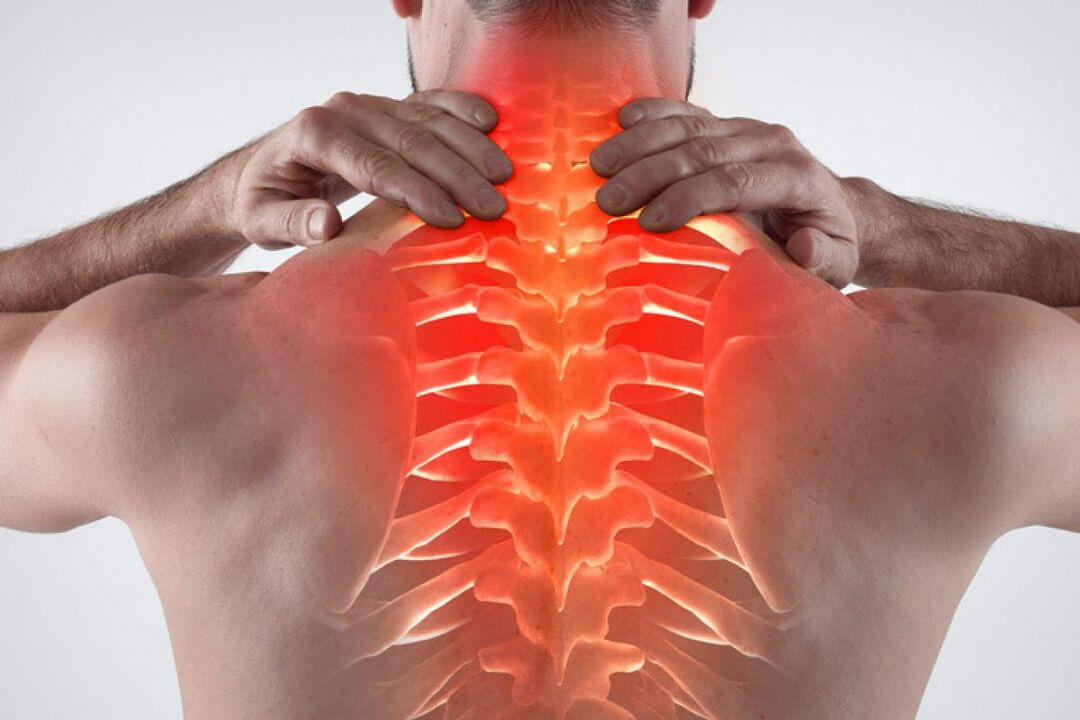Dystrophic as well as degenerative processes occur in the human spine, often leading to the appearance of such a disease as osteonecrosis. This pathology can affect a segment of the spine or the entire spine. Some parts of the spine are affected more often, some less often.

In the thoracic region of the spine, the vertebrae have different strengths, they are larger than the others. In addition, this rib has less movement, it has to bear less force and the muscles perfectly support the skeleton.
Failure of thoracic osteonecrosis is diagnosed much less frequently. This pathology often progresses with manifestations similar to symptoms of many diseases and depending on the degree of destruction of the discs, people are classified according to degree.
Grade 1 thoracic osteochondrosis: symptoms
In patients with early stage osteochondrosis, there is a decrease in the elasticity of the discs between the vertebrae of the spine. May protrude the annulus.
In the early stages of the disease, the following symptoms can be observed:
- The patient suffered from stabbing pain. It occurs after physical activity, exertion, or heavy lifting. Pain, constant, not intense, accompanied by low back pain;
- As a result of a high load, an unexpected rupture of the capsule in the intervertebral disc occurs and cracks form. As a result, the nucleus penetrates through the cracks, irritating the nerves in the dorsal spine;
- This degree of disease progresses with marked muscle tension. As a result, the space in the discs narrows more and the pain increases.
Thoracic osteosarcoma can occur with pain in the heart, digestive organs, and kidneys. At this stage of the disease, the signs are blurred, it is difficult to diagnose.
Treatment of osteonecrosis of the thoracic spine grade 1
Thoracic cystic fibrosis in its early stages is easier to treat. Treatment of the disease is aimed at eliminating the manifestations of the disease and healing the rupture of the capsule.
Since inflammatory processes occur in the tissues, causing severe pain, treatment begins with the use of analgesics in the form of tablets or injections.
To reduce spasms and increase blood flow in the affected part of the spine, medications are prescribed to help dilate the vessels. Daily intravenous injection of sodium chloride will help reduce swelling. The duration of such treatment is 5 days.
In addition, drugs chondroprotectors are prescribed for treatment. These drugs work on the affected areas and help the tissues recover.
To put an end to the inflammation, doctors often prescribe non-steroidal anti-inflammatory drugs. However, it should be remembered that taking these drugs can aggravate the course of already existing chronic diseases, in particular, pathologies of the digestive system. For this reason, the duration of non-steroidal drug administration should not exceed 10 days.
All medicines should only be prescribed by a doctor. To get a positive result, the patient must strictly follow all the recommendations of the doctor: dosage, duration of medication and duration of treatment.
All drugs prescribed for treatment can be classified as:
- antihistamines;
- non-steroidal anti-inflammatory drugs;
- hemoactive substances.
The patient is recommended to adhere to a month of bed rest, physiotherapeutic procedures are recommended.
For preventive purposes, the harvesting of worms is important. For this, it is not necessary to go to the gym. On any sports field there is always a suitable crossbar. It is recommended to hang for a few minutes once a day. This procedure helps relieve stress from the discs of all areas of the spine.
Tumor of thoracic spine 2 degrees: symptoms
If in the early stages, the disease does not betray and does not initiate treatment, the disease will progress to grade 2. With this pathology, a decrease in the elasticity of the intervertebral discs occurs later, which can forminto hernias and narrowing of the spacer holes was observed. The second stage of the disease is characterized by a neurological syndrome, as well as painful sensations.
Genital warts at this stage are difficult to diagnose and progress with signs similar to myocardial infarction, angina or pneumonia.
The following signs of 2nd degree thoracic osteonecrosis should be highlighted:
- constant pain in the affected area;
- arterial hypotension may be observed;
- appearance of unnatural mobility of the ridge;
- as a result of thinning of the cyst, joint mobility increases;
- due to unstable spine forming curvature of the spine;
- The vessels of the spinal cord are gradually affected.
With 2 degrees of thoracic osteonecrosis, pain occurs:
- in the chest. Such pains are aggravated after a long time in one position;
- in the interstitial region of the back;
- with a deep breath or exhalation;
- when turning as well as when leaning, when raising the arm.
With this pathology in the sternum there is a feeling of pressure, as well as stiffness.
Grade 2 of the disease can occur with intestinal pathologies, breathing difficulties. The patient complains of scaly skin, headache, and heart pain.
This pathology can persist for many years, with alternating periods of exacerbation and remission.
Treatment of osteonecrosis of the thoracic region grade 2
The disease requires urgent complex treatment. To relieve pain, doctors prescribe anti-inflammatory drugs. To achieve the effect of therapy, sessions of manual therapy as well as massage are prescribed. These procedures improve the blood supply to the spine.
Timely treatment can significantly slow down pathological processes in the spine, and in some cases can completely stop the development of osteonecrosis.
Often, thoracic spine osteomas are confused with heart disease or other conditions. When there are first manifestations, it is necessary to see a doctor for a differential diagnosis of osteosarcoma with different diseases and an effective treatment plan.

















































